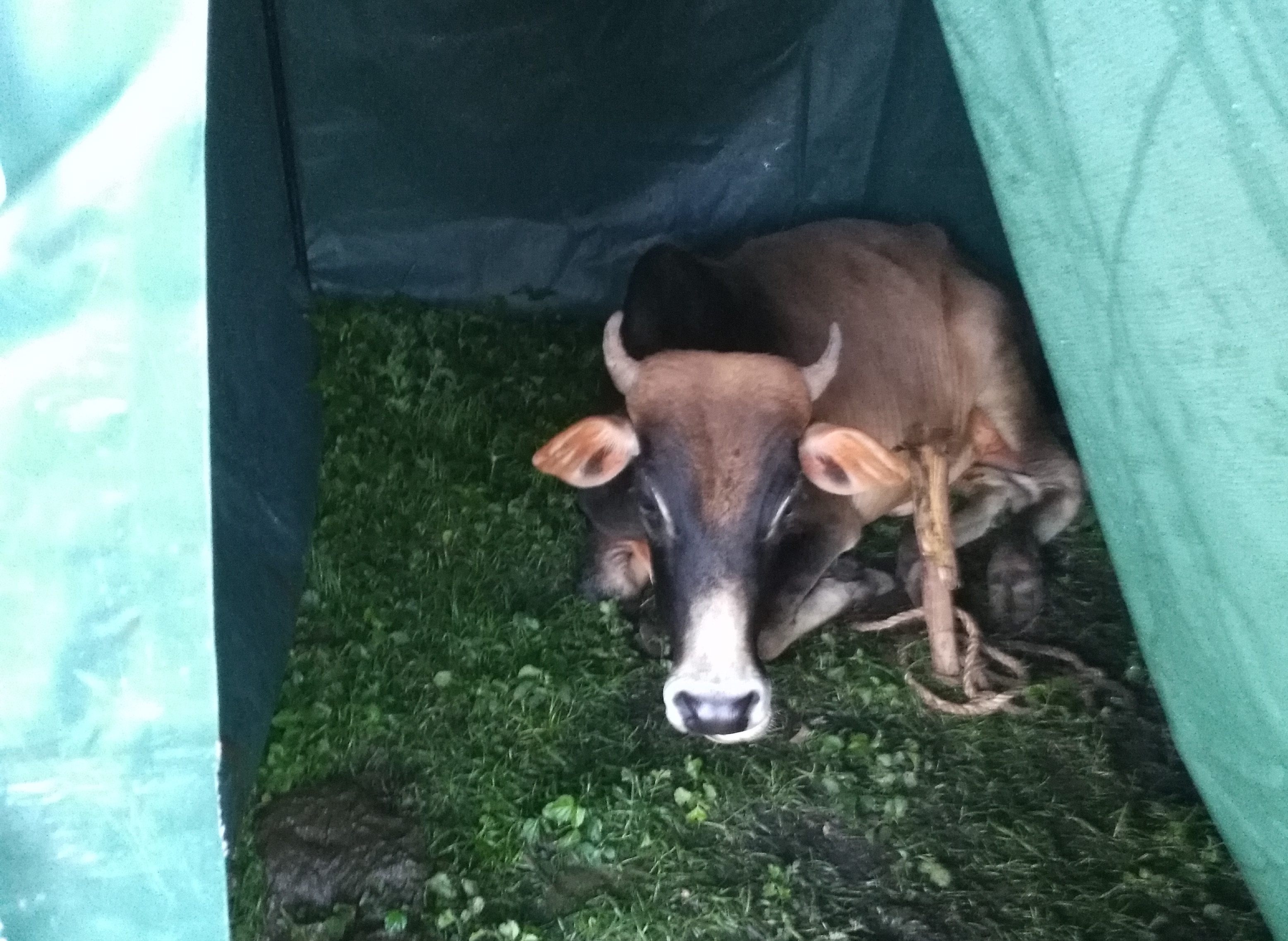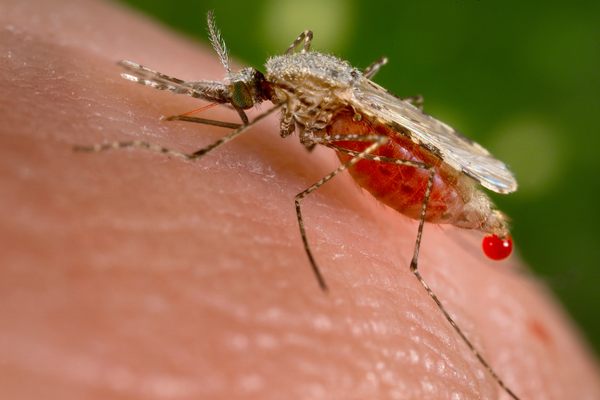To Build a Better Mosquito Trap, First Put a Cow in a Tent
Then pipe its scent to a warm decoy.

At the moment, the favored way to catch mosquitoes is to use a human leg as bait. This method, called “human landing catch,” has long been used by researchers to track outdoor mosquitos and the diseases they carry, including malaria. It’s not complicated—roll up your pant leg and catch visitors in a vial—but it takes a lot of work. The results can vary depending on how good someone is at catching them while resisting the urge to swat. More importantly, it can expose people to the infectious diseases they’re out there to study. One alternative is a light-based trap, but it doesn’t work quite as well as a tasty, exposed leg. There’s got to be a better way.
There are a lot of things that attract mosquitoes—the carbon dioxide animals exhale, body heat, smell, and even visual information, like the dark outline of a large animal. Bernard Abong’o, a doctoral student at the Liverpool School of Tropical Medicine, based out of the Kenya Medical Research Institute in Nairobi, might have built a better mosquito trap by putting a cow in a tent.

As described in a study recently published in the journal Parasites & Vectors, Abong’o and his colleagues developed a decoy trap that brings all of the mosquito magnets together. It starts with a large container to provide the gross visual outline of an animal. Inside is heated water, to simulate body heat. The smell and carbon dioxide come from putting the bait—a human or a cow—in an enclosed tent nearby, connected to the trap by a length of tube. Any visiting insects are trapped by sticky pads, some distance from the bait in the tent.
The traps were tested in two villages in western Kenya. Nearly 2,000 mosquitos later, the research team found that the cow decoy was particularly successful, and captured up to 10 times more insects than human landing catch or the human decoy.

This is possibly very good news for mosquito-tracking researchers, and perhaps for people who live in regions rife with malaria. “The trap demonstrates the principle involved in mosquito attraction and has potential for use in mosquito control,” Abong’o says in an email interview. “The necessary improvements are providing an internal heating system regulated at body temperature to replace hot water for thermal stimuli and synthetic odorant that incorporates all essential components of natural host odors.” In other words, don’t throw away those citronella candles just yet.













Follow us on Twitter to get the latest on the world's hidden wonders.
Like us on Facebook to get the latest on the world's hidden wonders.
Follow us on Twitter Like us on Facebook